Topics
Category
Era
Swede Hollow, St. Paul
Nestled into a small valley between the mansions of Dayton's Bluff and St. Paul proper, Swede Hollow was a bustling community tucked away from the prying eyes of the city above. It lacked more than it offered; houses had no plumbing, electricity, or yards, and there were no roads or businesses. In spite of this, it provided a home to the poorest immigrants in St. Paul for nearly a century.
Euro-American use of Swede Hollow dates as far back as 1839, when resident Edward Phelan (sometimes spelled Phalen) built a small cabin on the spot where the Theodore Hamm Brewing Company building was later built. Its birth as a community is attributed to the trappers, lumbermen, and laborers who built "hovels" in the area, taking advantage of the ravine landscape to remain comfortable in the winter and cool in the summer.
In the late 1850s Swedish immigrants moved into the vacant structures and made a life for themselves in the area. They paid the city a small rental fee for the right to live in the modest shanties. It became the first Swedish settlement in the city—a barebones place bisected by a spring-water creek and teeming with single-story houses. The Swedes called their new home "Svenska Dalen" (Swedish Dale). It would become more commonly known as Swede Hollow.
Throughout its history the Hollow was a melting pot of nationalities. It was home to many of the first Swedish, Polish, Italian, and Latino immigrants who came to St. Paul. While the names of residents changed, the spirit of community remained. Swede Hollow gave immigrants a chance to transition into American society together while retaining the values and traditions of their homelands.
Immigrants walked along the railroad tracks from the Union Depot to Swede Hollow upon their arrival in St. Paul. Notes pinned to their shirts helped residents direct them toward family members. Others moved into the first vacant house they could find.
Many of them took jobs in the milling and brewing industries at the top of the hill. Those companies looked to the Hollow for unskilled and semi-skilled labor. Immigrants also worked for the railroads and streetcar lines, and when they were financially able they left the Hollow for life "up on the street." As a result, many families started in the Hollow, expanded there, and moved away. They were then replaced by new families that hoped to do the same. Homes were generally not owned in the Hollow, so empty ones were used by new residents.
Phalen Creek, the creek that ran through the valley, was important to life in the Hollow. It provided water for small gardens, washing clothes, and carrying waste into the Mississippi River below. Outhouses built on stilts above the creek were used as bathrooms. Considerations for a sewage system began in 1900, after the city health department received numerous complaints about the odor emanating from the area. The cost was seen as "prohibitive" and those plans were soon scrapped.
For all of its problems in the eyes of outsiders, the community lined with outhouses was home to the people who lived there. Residents rarely lacked for necessities and a sense of togetherness prevailed. Children played baseball and fished for northern pike and crappie in the pool beneath the brewery.
After World War II the city of St. Paul, like cities throughout the United States, began to take steps to modernize. Officials longed to remove blight and improve living standards in their city. The Hollow, still nothing more than a collection of shacks, was deemed an unsafe place to live. The area that had supported the poorest immigrants was under threat.
The absence of proper heating and plumbing, as well as a contaminated water supply, were the last straw. The city's health department, worried about living conditions in the area, deemed the Hollow a health hazard and forced the sixteen families living there to move out. On December 11, 1956, the thirteen houses still standing were burned to the ground by the fire department. The neighborhood of Swede Hollow was no more. Twenty years later, the land was turned into a nature preserve by the City of St. Paul.
Bibliography
Adams, John S., and Barbara J. Vandraske. Minneapolis - St. Paul: People, Place, and Public Life. Minneapolis: University of Minnesota Press, 1993.
Anderson, Philip J., and Dag Blanck, eds. Acta Universitatis Upsaliensis. Studia Multiethnica Upsaliensia,. Vol. 14, Swedes in the Twin Cities: Immigrant Life and Minnesota's Urban Frontier. Uppsala: Acta Universitatis Upsaliensis, 2001.
Boxmeyer, Don. A Knack for Knowing Things: Stories from St. Paul Neighborhoods and Beyond. St. Paul: Minnesota Historical Society Press, 2003.
Brick, Greg A. Subterranean Twin Cities. Minneapolis: University of Minnesota Press, 2009.
Dupaul, Karin. A Walk through Historic Upper Swede Hollow. St. Paul: [Dayton's Bluff Community Council], 1994.
Originally found at: http://www.swedehollow.org/Photos/SwedeHollowWalkingTour/SwedeHollowWalkingTour.html
Hokanson, Nels M. "I Remember St. Paul's Swede Hollow." Minnesota History 41, no. 8 (Winter 1969): 362–371.
http://collections.mnhs.org/MNHistoryMagazine/articles/41/v41i08p362-371.pdf
Holmquist, June Drenning ed. They Chose Minnesota: A Survey of the State's Ethnic Groups. St. Paul: Minnesota Historical Society Press, 1988.
Millett, Larry. AIA Guide to the Twin Cities: the Essential Source on the Architecture of Minneapolis and St. Paul. St. Paul: Minnesota Historical Society Press, 2007.
Nyberg, Polly, and Jerome Betts. "Swede Hollow: A Community's Love Affair with Its Past." Common Ground no. 3 (Fall 1974): 4–11.
http://www.crcworks.org/commonground/cg3councils.pdf.
Price, Mollie. "Swede Hollow: Sheltered Society for Immigrants to St. Paul." Ramsey County History 17, no. 2 (Fall 1982): 12–22.
St. Paul Parks Conservancy with the St. Paul Parks and Recreation Department. Swede Hollow interpretation boards.
https://www.stpaul.gov/sites/default/files/2021-08/Swede%20Hollow%20Interpretation%20Boards%20Combined.pdf
Twin Cities Public Television. Lost Twin Cities II: Success of the Cities.
https://video.tpt.org/video/tpt-documentaries-lost-twin-cities-ii/
Yekaldo, Ralph F. Life Down in Swede Hallow [sic] with the Old Timers. St. Paul: N.p., 1987.
Related Resources
Primary
P1937
Michael T. Sanchelli Reminiscences, 1991–1993
Manuscript Collection, Minnesota Historical Society, St. Paul
Description: The Reminiscences discuss Sanchelli's youth in the Italian immigrant community of Swede Hollow.
"The Squatter's Home." St. Paul Daily Globe, March 21, 1886.
http://chroniclingamerica.loc.gov/lccn/sn90059522/1886-03-21/ed-1/seq-13/
Yekaldo, Ralph F. This is About Life in Swede Hallow [sic]: Things I Remember and the People I Grew Up With. Unpublished Manuscript. N.p, [1987?].
Secondary
Moran, Gerard. "From Poverty to Posterity: The Tuke Committee-Assisted Emigrants in Minnesota, 1882–1884." New Hibernia Review 26, no. 3 (Fall 2022), 34–52.
https://muse.jhu.edu/pub/81/article/874177
St. Paul Garden Club. Swede Hollow: A Capsule History of a Famous Saint Paul, Minnesota Landmark. N.p.: 1976.
Yarusso, Gentile. The Classics of Swede Hollow. N.p.: [1977?].
——— . Swede Hollow, Then Up on the Street. St. Paul: N.p., 1968.
Web
Minnesota Historical Society, Placeography. Swede Hollow Park, St. Paul, Minnesota.
http://www.placeography.org/index.php/Swede_Hollow_Park,_Saint_Paul,_Minnesota
City of St. Paul Communications Services. Saint Paul History: Swede Hollow.
https://www.youtube.com/watch?v=ZLnZ4_7jxU4
Moore on Sunday. Railroad Island.
https://www.youtube.com/watch?v=Odv-QKuK-lc
Wurzer, Cathy. "Burning Swede Hollow: Why an Immigrant Community Deliberately Went Up In Flames." MPR News. December 9, 2011.
http://www.mprnews.org/story/2011/12/08/burning-swede-hollow
Related Images
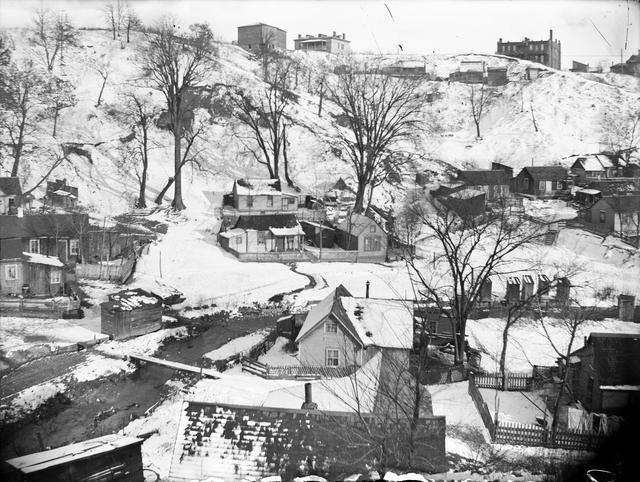
Swede Hollow, St. Paul
Public domain
Holding Location
Articles
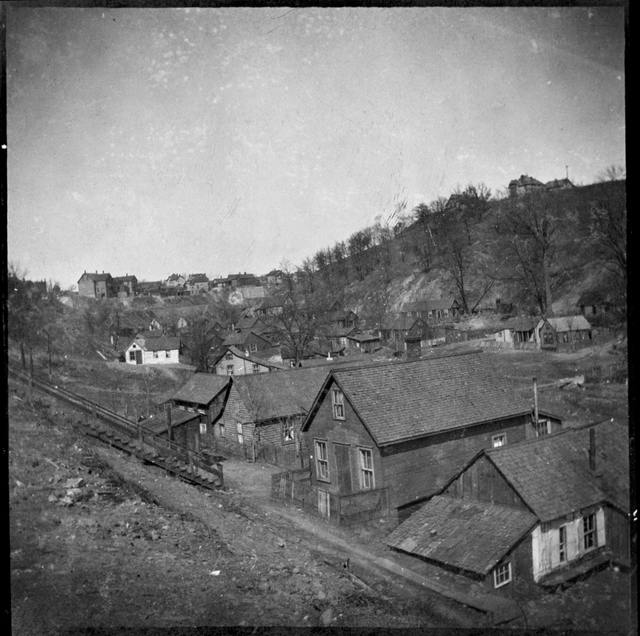
Swede Hollow, view towards Dayton's Bluff
Public domain
Holding Location
Articles
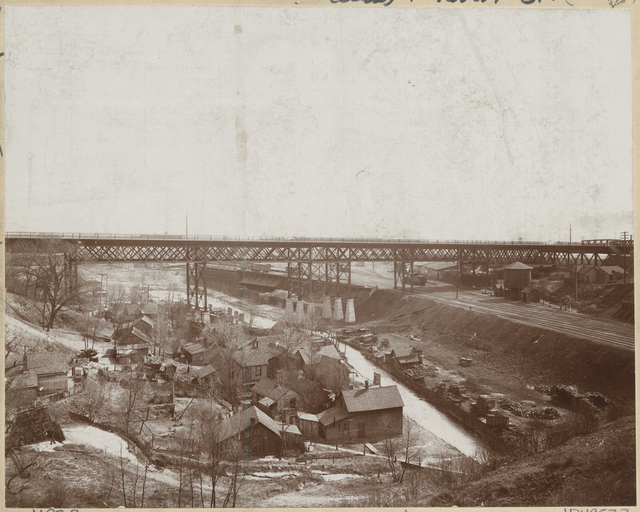
Sixth Street Bridge, St. Paul; Swede Hollow Below Bridge
Public domain
Holding Location
Articles
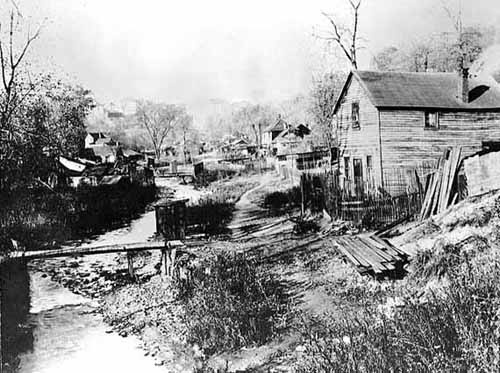
Looking north from East Seventh Street before creek was enclosed, Swede Hollow, St. Paul
Public domain
Holding Location
Articles
More Information
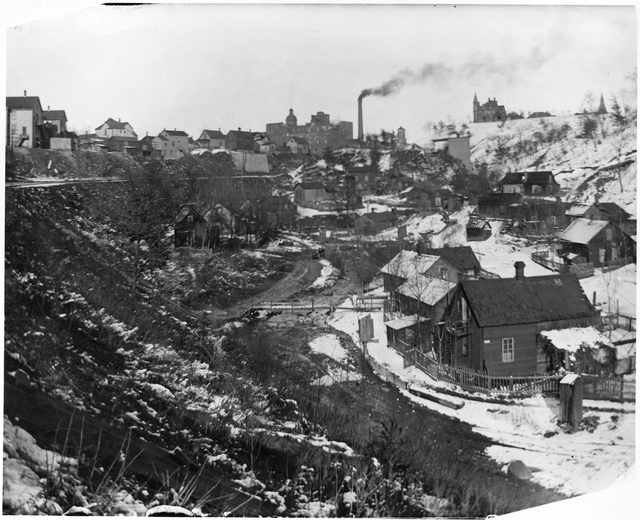
Swede Hollow with Hamm's Brewery in the background
Public domain
Holding Location
Articles
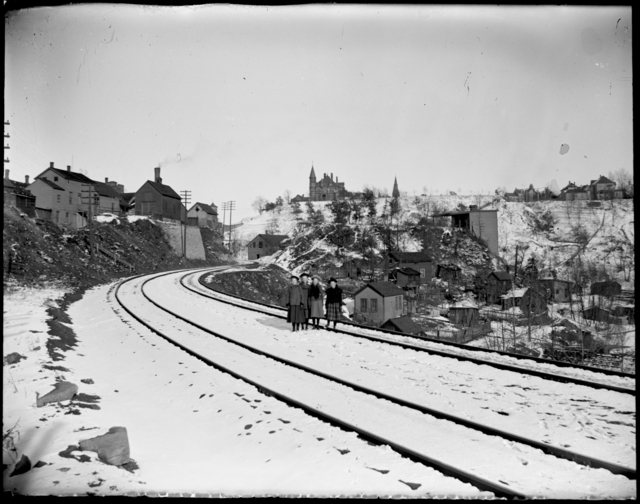
Swede Hollow with St. Paul and Duluth tracks in the foreground
Public domain
Holding Location
Articles

View into Swede Hollow
Holding Location
Articles
More Information
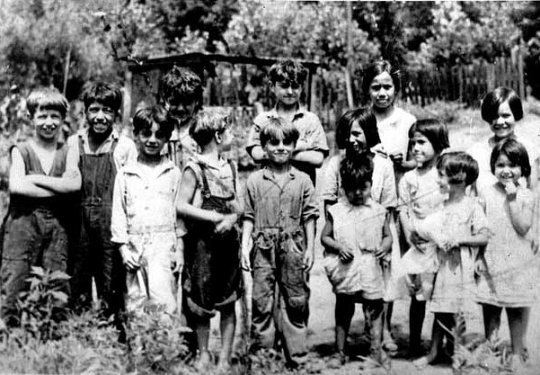
Swede Hollow Junior Gang, St. Paul
Holding Location
Articles
More Information
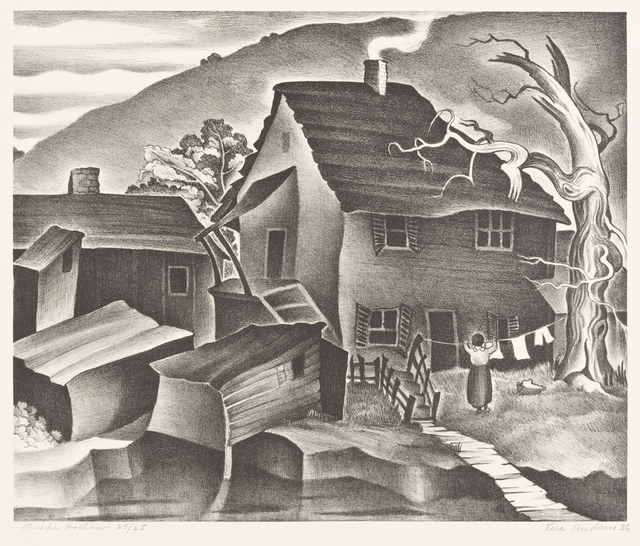
Lithograph of Swede Hollow, St. Paul
Holding Location
Articles
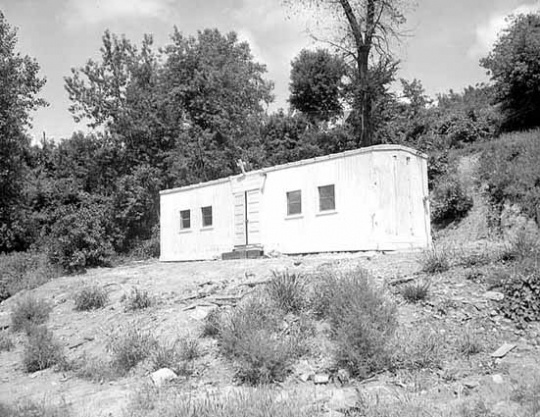
Boxcar chapel in Swede Hollow, St. Paul; served the Mexican American Community
Boxcar chapel in Swede Hollow, 1949. Mexican Americans were the final immigrant group to call Swede Hollow home. Photograph by St. Paul Dispatch.
Holding Location
Articles
More Information
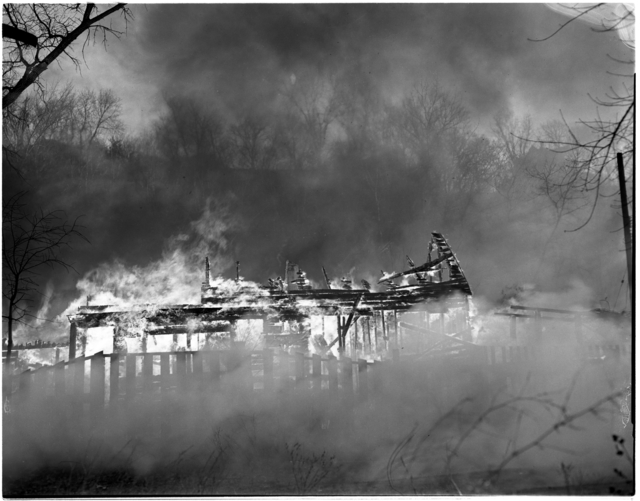
Burning of Swede Hollow, St. Paul
After deeming Swede Hollow an unhealthy place to live, the city evicted the remaining families and burned what structures remained, 1956. Photograph by the St. Paul Dispatch & Pioneer Press.
Holding Location
Articles
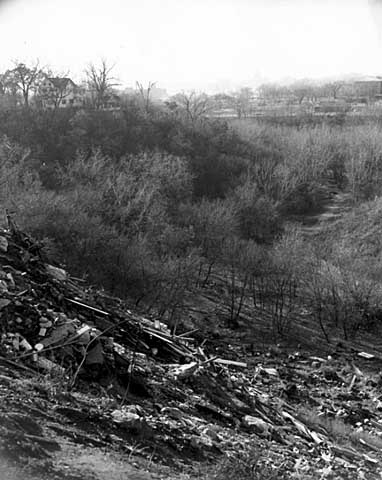
Swede Hollow after being cleared out
Holding Location
Articles
More Information
Related Articles
Turning Point
In the late 1850s Swedish immigrants move into structures vacated by laborers, trappers, and lumbermen at the base of Dayton's Bluff. They begin to make a life for themselves in the area that will in a short time be known as Swede Hollow.
Chronology
1839
Late 1850s
1880s
1905
1920s
1937
1956
1976
Bibliography
Adams, John S., and Barbara J. Vandraske. Minneapolis - St. Paul: People, Place, and Public Life. Minneapolis: University of Minnesota Press, 1993.
Anderson, Philip J., and Dag Blanck, eds. Acta Universitatis Upsaliensis. Studia Multiethnica Upsaliensia,. Vol. 14, Swedes in the Twin Cities: Immigrant Life and Minnesota's Urban Frontier. Uppsala: Acta Universitatis Upsaliensis, 2001.
Boxmeyer, Don. A Knack for Knowing Things: Stories from St. Paul Neighborhoods and Beyond. St. Paul: Minnesota Historical Society Press, 2003.
Brick, Greg A. Subterranean Twin Cities. Minneapolis: University of Minnesota Press, 2009.
Dupaul, Karin. A Walk through Historic Upper Swede Hollow. St. Paul: [Dayton's Bluff Community Council], 1994.
Originally found at: http://www.swedehollow.org/Photos/SwedeHollowWalkingTour/SwedeHollowWalkingTour.html
Hokanson, Nels M. "I Remember St. Paul's Swede Hollow." Minnesota History 41, no. 8 (Winter 1969): 362–371.
http://collections.mnhs.org/MNHistoryMagazine/articles/41/v41i08p362-371.pdf
Holmquist, June Drenning ed. They Chose Minnesota: A Survey of the State's Ethnic Groups. St. Paul: Minnesota Historical Society Press, 1988.
Millett, Larry. AIA Guide to the Twin Cities: the Essential Source on the Architecture of Minneapolis and St. Paul. St. Paul: Minnesota Historical Society Press, 2007.
Nyberg, Polly, and Jerome Betts. "Swede Hollow: A Community's Love Affair with Its Past." Common Ground no. 3 (Fall 1974): 4–11.
http://www.crcworks.org/commonground/cg3councils.pdf.
Price, Mollie. "Swede Hollow: Sheltered Society for Immigrants to St. Paul." Ramsey County History 17, no. 2 (Fall 1982): 12–22.
St. Paul Parks Conservancy with the St. Paul Parks and Recreation Department. Swede Hollow interpretation boards.
https://www.stpaul.gov/sites/default/files/2021-08/Swede%20Hollow%20Interpretation%20Boards%20Combined.pdf
Twin Cities Public Television. Lost Twin Cities II: Success of the Cities.
https://video.tpt.org/video/tpt-documentaries-lost-twin-cities-ii/
Yekaldo, Ralph F. Life Down in Swede Hallow [sic] with the Old Timers. St. Paul: N.p., 1987.
Related Resources
Primary
P1937
Michael T. Sanchelli Reminiscences, 1991–1993
Manuscript Collection, Minnesota Historical Society, St. Paul
Description: The Reminiscences discuss Sanchelli's youth in the Italian immigrant community of Swede Hollow.
"The Squatter's Home." St. Paul Daily Globe, March 21, 1886.
http://chroniclingamerica.loc.gov/lccn/sn90059522/1886-03-21/ed-1/seq-13/
Yekaldo, Ralph F. This is About Life in Swede Hallow [sic]: Things I Remember and the People I Grew Up With. Unpublished Manuscript. N.p, [1987?].
Secondary
Moran, Gerard. "From Poverty to Posterity: The Tuke Committee-Assisted Emigrants in Minnesota, 1882–1884." New Hibernia Review 26, no. 3 (Fall 2022), 34–52.
https://muse.jhu.edu/pub/81/article/874177
St. Paul Garden Club. Swede Hollow: A Capsule History of a Famous Saint Paul, Minnesota Landmark. N.p.: 1976.
Yarusso, Gentile. The Classics of Swede Hollow. N.p.: [1977?].
——— . Swede Hollow, Then Up on the Street. St. Paul: N.p., 1968.
Web
Minnesota Historical Society, Placeography. Swede Hollow Park, St. Paul, Minnesota.
http://www.placeography.org/index.php/Swede_Hollow_Park,_Saint_Paul,_Minnesota
City of St. Paul Communications Services. Saint Paul History: Swede Hollow.
https://www.youtube.com/watch?v=ZLnZ4_7jxU4
Moore on Sunday. Railroad Island.
https://www.youtube.com/watch?v=Odv-QKuK-lc
Wurzer, Cathy. "Burning Swede Hollow: Why an Immigrant Community Deliberately Went Up In Flames." MPR News. December 9, 2011.
http://www.mprnews.org/story/2011/12/08/burning-swede-hollow













